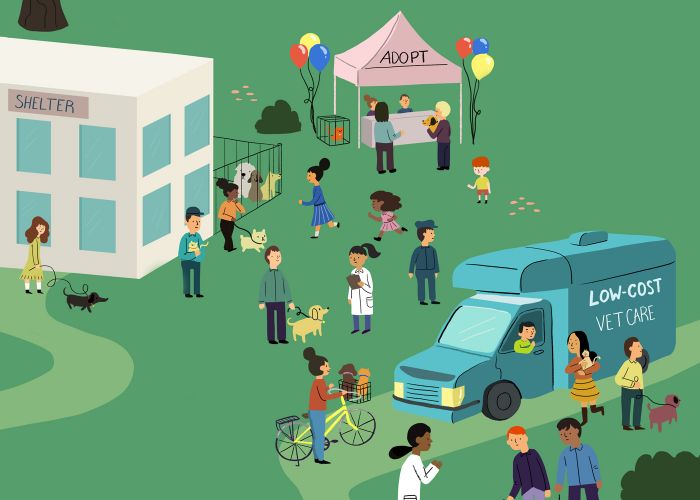Caught in the middle
Will pets be the big loser as private vets battle nonprofit clinics?
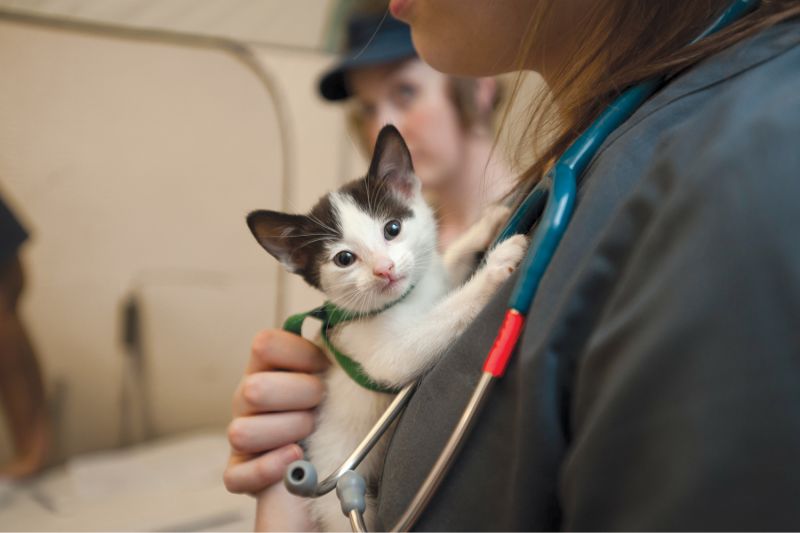
On a Friday morning in late June, Jay Roberts pulls into the empty parking lot of the North Alabama Spay/Neuter Clinic in Huntsville and unlocks the front door. The building is dark and quiet, with none of the bustle Roberts once enjoyed. “We were jammin’,” he says of the days when the clinic averaged 27 to 30 sterilization surgeries a day. “We really were.”
The staff veterinarian and technicians have moved on to other jobs. Roberts, the office manager, is the sole remaining employee, coming in twice a week to answer calls and schedule surgeries at two local private practices owned by veterinarians sympathetic to the group’s mission.
Not long ago, the North Alabama clinic had all the ingredients for success. It had a board of directors, donors, staff and volunteers dedicated to saving lives by reducing pet overpopulation. It had an experienced veterinarian committed to the cause. And it was located in the state’s fourth most populous city, where the need for low-cost spay/neuter services was huge.
At the clinic’s grand opening ceremony in January 2012, staff and volunteers from shelters and rescue groups toured the facility and celebrated the new milestone. “Everyone was thrilled,” says clinic president Jane Jattuso.
Everyone, that is, except for some private practice veterinarians in the state who oppose nonprofit veterinary clinics. In 2012, some of these opponents held leadership positions on the Alabama State Board of Veterinary Medical Examiners, the agency responsible for inspecting veterinary facilities and issuing premise permits and licenses to practice in the state. And they were gearing up for a relentless campaign against the nonprofits.
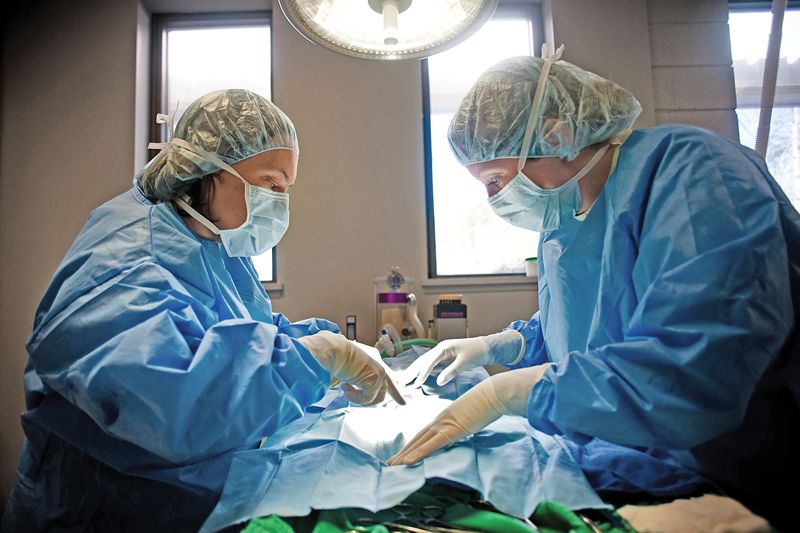
The summer after the North Alabama clinic opened, the state board issued proposed rules that would have explicitly prohibited veterinarians from working for nonprofit clinics. (The state’s veterinary practice law doesn’t allow veterinarians to be employees under the supervision of non-veterinarians except in particular circumstances; for this reason, clinic veterinarians are typically hired as independent contractors with all medical decision-making responsibilities.) When those rules failed to pass, the veterinarians opposed to nonprofits began lobbying for a bill that would have effectively prevented nonprofits from obtaining the permits required to operate a clinic. They formed the Alabama Veterinary Practice Owners Association, and in a series of letters and emails, urged the state’s veterinarians to oppose the spay/neuter clinics, which they characterized as unnecessary and an attack on their profession.
The Huntsville facility was the fourth nonprofit spay/neuter clinic to open in Alabama, and as it turned out, the most vulnerable to efforts to shut them down. The clinic’s veterinarian, Joy Baird, had moved back to her home state while her husband was attending a nearby law school. After he graduated and was offered a job in Texas, Baird tried for six months to hire a veterinarian to take her place. But by then, the state board wasn’t just targeting the clinics; it was threatening the licenses of veterinarians who worked in them. No one was willing to take that risk.
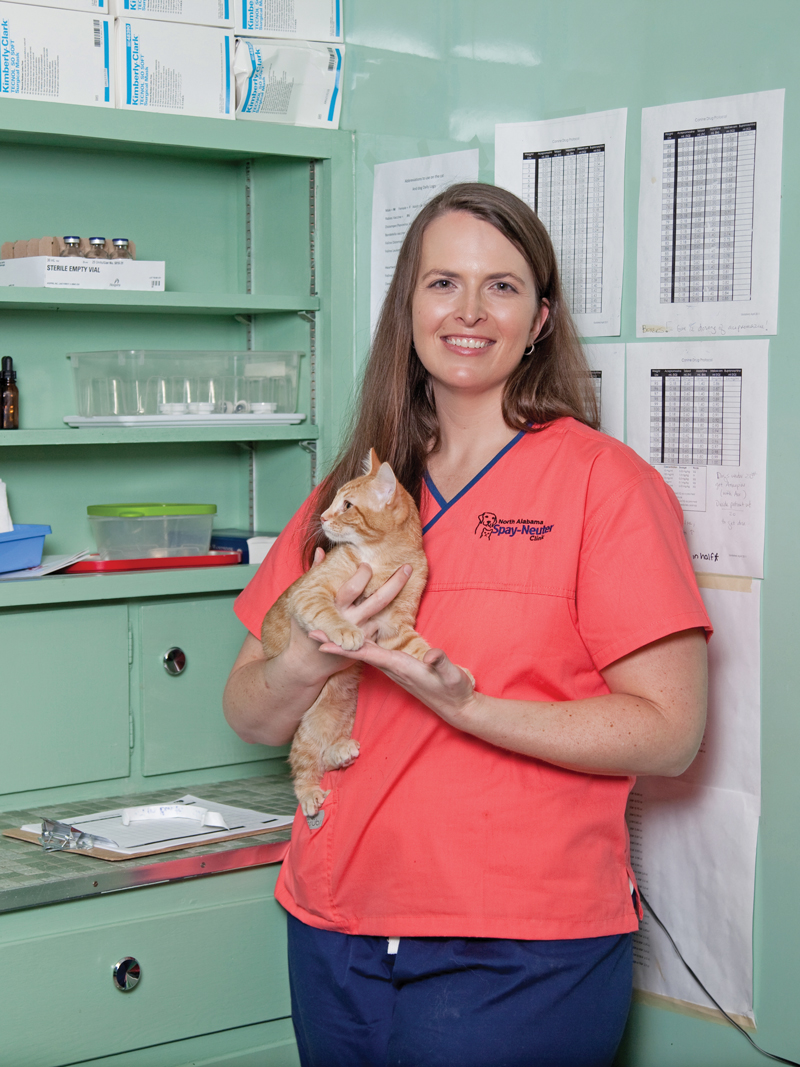
Over 28 months, Baird had sterilized 8,882 cats and dogs. Live-release rates at the municipal shelter jumped from 34 to 73 percent. Then on April 23, 2014, she performed her last surgery, and the clinic closed its doors.
“That was devastating,” Baird remembers. “We fought so hard keeping it open.”
The three remaining nonprofit clinics—in Montgomery, Irondale (a suburb of Birmingham) and Dothan—are still operating. But with a group of veterinarians who have painted them as illegal, providers of substandard care and unfair competition with for-profit practices, their future is uncertain.
Mindy Gilbert, HSUS state representative for Alabama, has been on the front lines of the battle to save the clinics. “It’s been very ugly,” she says. “It has consumed the past four years of my life.”
Gilbert knows that a bad outcome in Alabama could set the wrong precedent for other states where nonprofit veterinary services are also being threatened. But most of all, she worries about the impact in her own state.
“We have so little going for us here; we really do,” she says. “One-third of our state is not in compliance with the state law that requires a shelter of some kind. Most of the state is rural and doesn’t have local animal control ordinances. There’s a tremendous segment of the population that’s living at or below the national poverty level. We’re fighting to keep what little we have. If we don’t fight to keep this, we’re really going to sustain a terrible loss.”
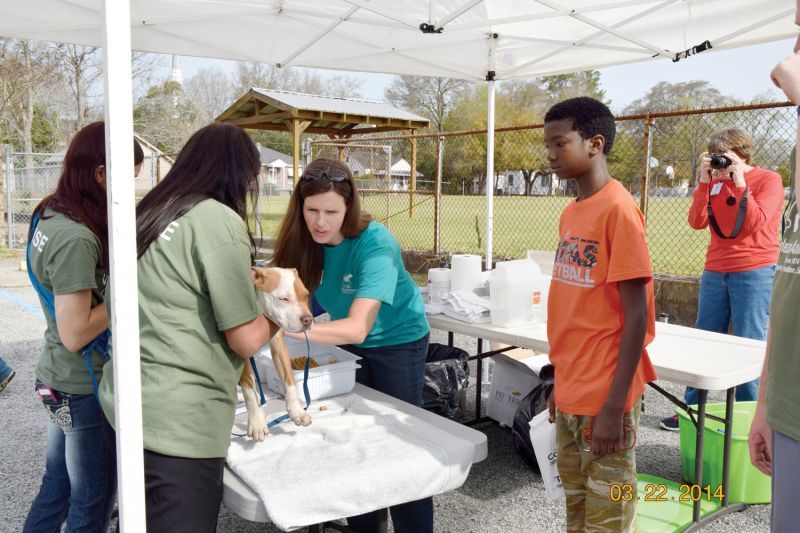
With their shared goal of helping animals, veterinarians and humane organizations would appear to be unlikely adversaries. And yet conflict over spay/neuter programs and other nonprofit veterinary services has a legacy of legal, legislative and PR battles that stretches back for more than half a century.
In the July 1971 issue of HSUS News , Phyllis Wright, then working for The HSUS, defended a spay/neuter clinic in Northern Virginia, stating that the clinic was only opened after the nonprofit was unable to enlist enough local veterinarians to participate in a low-cost spay/neuter program. “We are in competition with the euthanasia room, not the veterinarians,” Wright said.
It’s an argument that animal welfare organizations continue to make today.
In many communities, nonprofit clinics and for-profit practices are allies that commonly refer clients to each other. But in others, spay/neuter clinics are still a source of contention. And in some places where nonprofit spay/neuter programs have been largely accepted by the private veterinary community, new rifts are forming over programs that provide other basic care services for animals who otherwise won’t receive them.
“Tensions are definitely escalating,” says Inga Fricke, director of shelter and rescue group services at The HSUS. “There’s been a more concerted effort, particularly by state veterinary associations and other groups, to try to limit the scope of work of these organizations, or close them altogether.”
Georgia veterinarian Will Mangham, a consultant for The HSUS Pets for Life program, says that the current conflict is a reflection of the unprecedented financial pressures his profession is facing. The typical veterinary school graduate carries $150,000 in student loan debt. Equipment and drug costs have soared. Corporate-owned practices are springing up in pet supply stores. Pet medications are now sold online and at discount pharmacies. And while the number of pets in the U.S. has grown, visits to veterinarians have declined.
For veterinarians who are feeling the pinch and looking for someone to blame, nonprofits are easy targets, Mangham says. “Because they feel someone is doing this to them, stealing their revenue, and surely it must be the nonprofits. But it’s not true.”
The 2011 Bayer Veterinary Care Usage Study identified key reasons for declining profits at veterinary practices. They included a weak economy, markets with too many practices in competition, people consulting the Internet for veterinary advice, a perception that routine wellness visits aren’t necessary, the challenges of transporting cats and sticker shock over the cost of vet care.
What the Bayer study didn’t cite as a major factor was competition from nonprofits. And, points out Fricke, “That’s an industry study, not one conducted by advocacy groups. And it really demonstrates that vets have much bigger impediments to success in their practices than just the blip of a nonprofit.”
Most veterinarians recognize that, Fricke says. Most also recognize the need for low-cost care to reduce animal overpopulation and suffering. Like people who work in shelters, most veterinarians got into their field to care for animals, and many have dedicated their careers to working for nonprofit programs, even when their work put them in conflict with colleagues, veterinary associations or licensing boards.
It’s a minority of veterinarians who have a problem with nonprofit services, says Fricke. But they tend to be an extremely vocal group. They claim that subsidized vet care is unfair business competition because nonprofits are exempt from income tax and are able to solicit donations and recruit volunteers.
Veterinarian Michael Blackwell of the Humane Society Veterinary Medical Association, an HSUS affiliate, has heard this argument many times, but it still surprises him. For-profits and nonprofits are “apples and oranges,” he says. “I call them parallel universes because of the very nature … of the business model and the populations they’re trying to serve. Rather than competing with established veterinarians, nonprofit organizations and low-cost services are reaching a new audience of pet owners and introducing them to veterinary services for the first time.”
Blackwell has witnessed a lot of changes in his field over the past 40 years, and he knows that veterinarians today don’t have it easy. When he was a teenager, Blackwell helped manage his father’s mixed animal practice in Oklahoma. Like most private practice veterinarians at the time, his father didn’t have an X-ray machine. Pets getting blood work wasn’t common. But as public attitudes toward pets evolved and human medicine advanced, standards for veterinary care also began to change.
“It’s not that we went to school and studied how we could do more things just to make more money,” he says. “People’s expectations shifted, and that was good, but it means having to set up a veterinary medical practice that can provide 21st century medicine.”
As a result, people with means have more options than ever for treating their pets’ illnesses. But at the same time, veterinary care has become unaffordable for a large segment of the pet-owning public. “The nonprofits are trying to meet a need,” says Fricke, “and the for-profits are perceiving a challenge.”
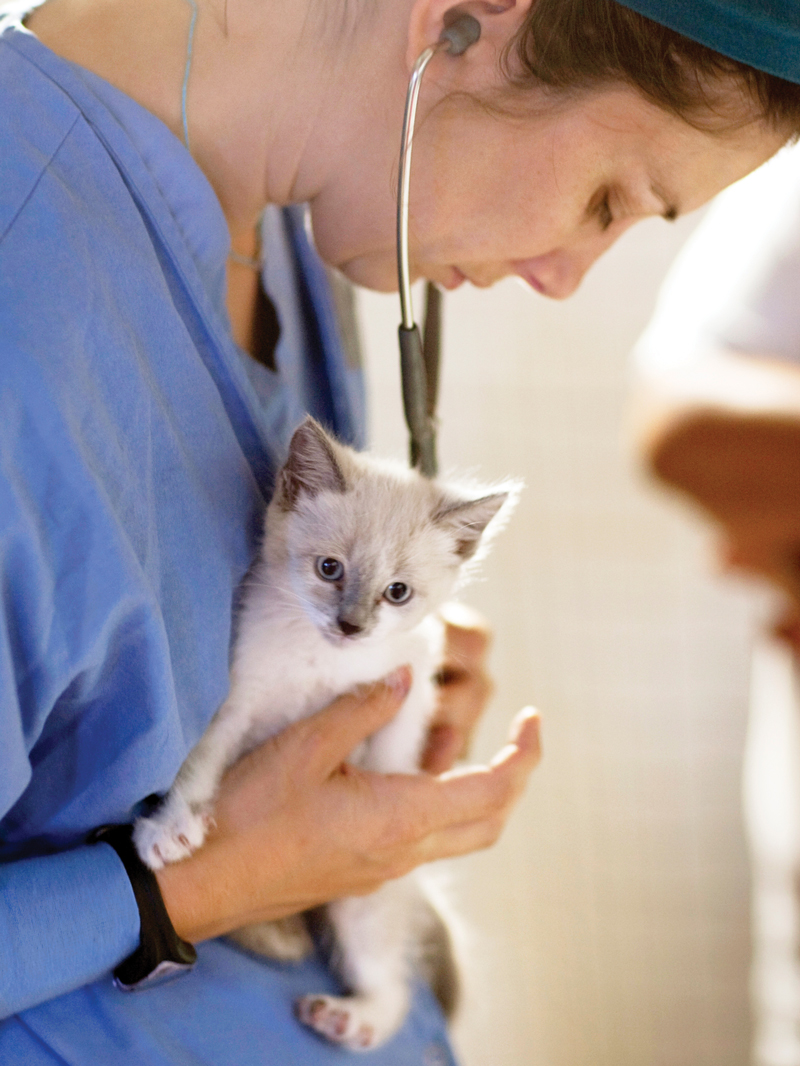
Private practitioners are business owners, responsible for their own and their staffs’ livelihoods. Blackwell doesn’t criticize those who choose not to serve the pets of people who can’t afford market rates. But he does fault those in his profession who try to pass laws that would prevent humane organizations and the veterinarians who work with them from meeting these needs.
“That’s so anti-American,” he says.
Over the years, the courts, the IRS and federal trade regulators have more often than not come to a similar conclusion and sided with the nonprofits. But the fear of antagonizing local private practitioners or triggering costly litigation has had an immeasurable impact.
“Sometimes it has manifested itself in actual closures of operations,” says Fricke, “but other times it really manifested just in terms of shelters or nonprofit organizations being afraid to even open and provide certain services, kind of voluntarily restricting their services because they knew they were going to face opposition from their veterinary community.”
Mark Keyl, former president of the Southern Pines Animal Shelter in Hattiesburg, Miss., has witnessed how fears of antagonizing local veterinarians can affect the services available to struggling pet owners. Since it opened a high-volume, low-cost spay/neuter clinic in 2009, Southern Pines has sterilized more than 35,000 pets. The shelter’s live-release rate has jumped from 26 percent in 2008 to 94 percent today. But Keyl has long felt the need to do more.
Nearly 90 percent of the clinic’s clients state on their intake form that they’ve never been to a veterinarian (other nonprofit clinics that collect such data report similar numbers). “These people now have a spayed or neutered pet and that’s great, but they still can’t get veterinary services that are affordable,” Keyl says.
Keyl would like to be able to offer vaccinations outside of surgery and some other basic health care services for pets whose owners can’t afford private practice prices. But relationships between Southern Pines and local veterinarians have been strained since a group of about 30 veterinarians made a surprise appearance at the shelter’s 2011 general membership meeting and tried to push through a motion to limit the spay/neuter clinic’s clientele to people receiving federal assistance.
While the motion wasn’t accepted, some of Southern Pines’ leaders fear that expanding the clinic’s services would trigger backlash from the veterinary community. So Keyl recently tried to interest some of those veterinarians in a low-cost assistance program in which clients would bring their pets to the private practices, and the shelter would subsidize the cost. “We met at a local place, kind of went around the table. They just weren’t interested in doing anything with us,” he says. “They made their same old arguments they’d been using: ‘[You’re] taking away business, giving it away.’”
From a practical point of view, Keyl doesn’t get it. The shelter adopts out thousands of animals each year—all potential clients for the area’s private practitioners. “But they’ve never seen it that way,” he says. “They just have it in their minds that we’re losing them a bunch of business.”

Mangham has encountered similar attitudes in his years working for nonprofits, and he believes they often stem from a simple lack of awareness. “Veterinarians are not as a whole money-grubbing,” he says, and most do some level of charitable work, such as by providing discounts to rescue organizations. But many don’t realize that the clients they see in their practices are just one subset of the pet-owning population.
“Just because they’re veterinarians doesn’t mean they know how many animals are euthanized or die simply because of lack of care,” Mangham says. “Because what little business strategy we’re taught [in veterinary school] says, ‘If you’re going to have a practice, have it in an affluent area where people can afford your services.’ So if you’re only in an affluent area and have no need to go to the municipal shelter, then you’re unaware of what’s going on.”
When veterinarians aren’t exposed to reality, it can be hard to convince them that a nonprofit that is treating thousands of pets a year isn’t taking something out of their pockets. “But in most cases it’s not,” Mangham says.
He cites the example of a spay/neuter clinic he helped establish in Athens, Ga., in 2008. While local private practitioners expressed concerns about loss of income, they were willing to take a “wait and see” approach. Within a few years, the veterinarians reported that the clinic had not affected their revenues. Some of their clients had used the clinic, but not a significant number, and the clinic was in a small way sending them new clients. “So overall, they were fine with it,” Mangham says, “and that continues today.”
But not all situations resolve this peaceably. Like other social welfare programs, the topic of subsidized veterinary care can elicit heated debates about personal responsibility and anger about people who may be “cheating the system.”
There is a misconception among some veterinarians that nonprofit clinics operate like discount big-box stores, attracting hordes of wealthy penny pinchers. And it’s driving a push by some veterinary associations for mandatory means-testing, laws that prohibit nonprofits from serving pets of people who make over a certain income.
For the past three years, the South Carolina Association of Veterinarians has been lobbying for legislation that would limit nonprofit veterinary care to spay/neuter, vaccinations, parasite treatment and microchipping unless the animal’s owner falls under the federal poverty level.
“It’s just so insane,” says Charleston Animal Society (CAS) president Joe Elmore. “The federal poverty level, well, that is $11,770 for a single person. Here in the South, folks have multiple animals. So you’re telling me someone who makes $12,000 wouldn’t qualify even if they have four or five animals.”
The bill would also ban vaccination clinics within seven miles of a private practice, which would cripple CAS’s community outreach program in the economically depressed Chicora-Cherokee neighborhood of North Charleston. The program is funded by The HSUS and modeled after the HSUS Pets for Life (PFL) program, in which nonprofit staffers and volunteers go door-to-door in underserved communities, building relationships with residents and offering free spay/neuter and other pet care resources.
Amanda Arrington, HSUS PFL director, has no doubt that clients of these programs are unable to afford veterinary care, but asking them for proof of income is counterproductive, she says. “We’re inserting a new conversation into a community. We want the relationship to be one of mutual respect. If I’m asking you to prove you’re poor enough to receive services, it completely changes the dynamic.”
Statistics from PFL programs around the country show that only about 9 percent of pets in targeted communities are sterilized. Vaccination clinics are critical to engaging residents and offering spay/neuter assistance, says Elmore. They also serve an important public health role, as CAS veterinarian Sarah Boyd pointed out at a legislative meeting last year: “If the shelters are where we see parvo and distemper walking in the door, then why would we limit a shelter veterinarian’s ability to give these lifesaving vaccinations?”
But others feel differently.
“I’ve heard some of these for-profit veterinarians [say] it’s not a right to have animals, it’s a privilege; they shouldn’t have them if they can’t afford them,” Elmore says. “We deal with reality. And the reality is people are going to have pets regardless of whether they can afford them or not.”
And, he points out, it’s the nonprofits, not the private practices, that get the cats with upper-respiratory disease and the pets with broken legs whose heartbroken owners can’t afford veterinary care. And it’s the shelters and municipal agencies that often have to put those animals down, or add to their overburdened kennels.
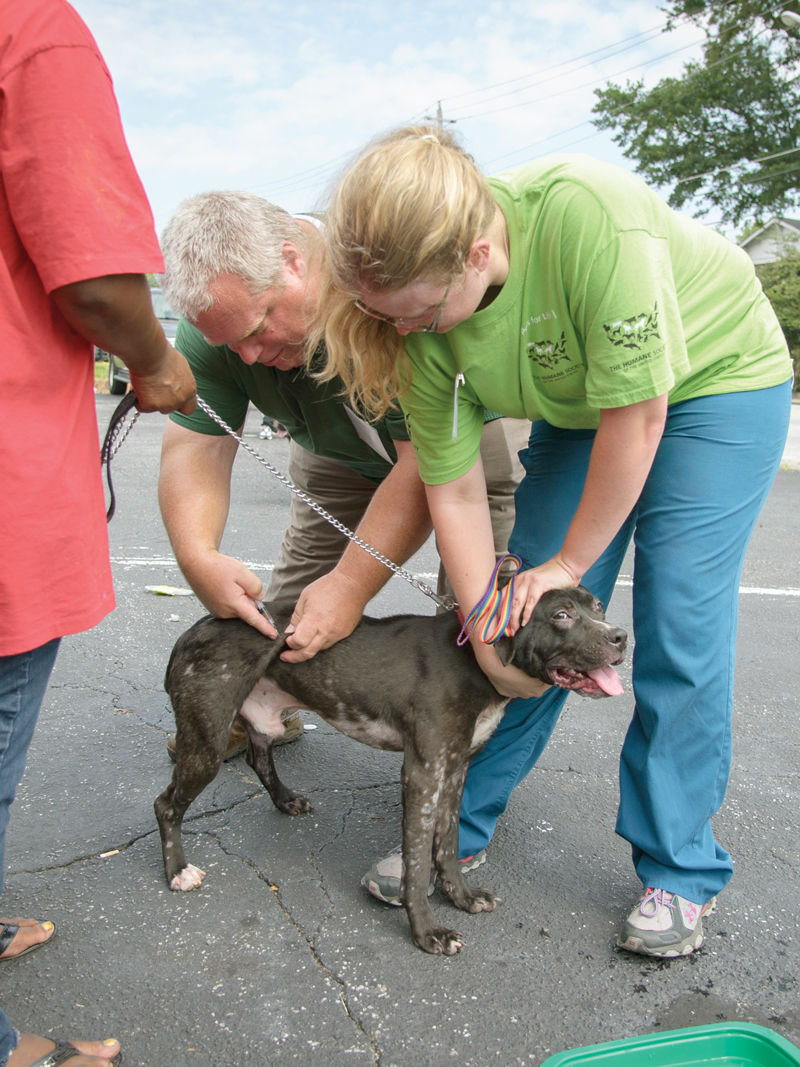
Of all the places where nonprofit veterinary services are being threatened, Alabama may have the most to lose.
Statistics from the Alabama Animal Alliance Spay/Neuter Clinic in Montgomery, the state’s first nonprofit clinic, show what’s at stake. Before the clinic opened in 2007, the euthanasia rate at the Montgomery Humane Society (MHS) exceeded 80 percent, and intakes were rising every year. The shelter contracted out its pre-adoption spay/neuter work to local veterinarians, but there weren’t enough participating vets to handle the volume of surgeries, much less to offer low-cost spay/neuter to the public, says MHS executive director Steven Tears.
More than 60,000 surgeries later, intakes at MHS have dropped by 45 percent. In 2014, the shelter euthanized 5,062 fewer animals than it did in 2006.
But even with numbers like this, the controversy continues, and the animal welfare community is worried.
Sara Shirley, executive director of the Shelby Humane Society in Central Alabama, says she once spent six hours of every day euthanizing healthy, adoptable animals. “The fear is deep for me personally, but it’s organization-wide, too,” Shirley says. “If these people that are against these lower-cost options are successful, how quick is our intake going to spring right back up to even greater numbers than they were?”
Earlier this year, a compromise bill was introduced in the state legislature. H.B. 563 would have clarified the state law to explicitly allow veterinarians to be employed by nonprofit spay/neuter clinics, while limiting their services to sterilization surgery, rabies vaccination and parasite treatment. The bill failed to pass, and the nonprofits are now awaiting the resolution of two circuit court cases involving veterinarians with the Irondale clinic, who are appealing administrative charges the state board levied against them in 2014. “I anticipate this being tied up in the legal arena for a while,” says Gilbert.
In the meantime, the North Alabama clinic remains in limbo. The rent, insurance and utility bills still come each month for a facility that’s not being used, and donations are dwindling. But its supporters aren’t willing to close up shop; they still hope that the courts and the legislature will do the right thing.
Since closing, the North Alabama clinic has been able to subsidize 2,000 spay/neuter surgeries at two local veterinary practices. Roberts, the part-time office manager, is grateful for that, even though it’s half the number the clinic was averaging and perhaps a third, he estimates, of what would have been done if it had continued to grow.
And nearly every day brings tangible reminders of those decreased numbers. On one day in June, it was a woman who knocked on the clinic doors, despite a sign informing passersby that the business is temporarily closed. She was holding a 3-week-old gray tabby kitten she found wandering in the road. “You need to take it,” she told Roberts.
“I said, ‘I don’t have anywhere to take it,’” Roberts remembers. “Everybody is at capacity. It’s awful. Even the people who do fostering and usually foster five or six are now at nine or 10. There’s just nowhere to put them.”
Roberts can’t help but think that if the clinic had been operating at full capacity over the past year, things would be different. “That little kitten wouldn’t probably have been walking down the road if we’d been open.”


